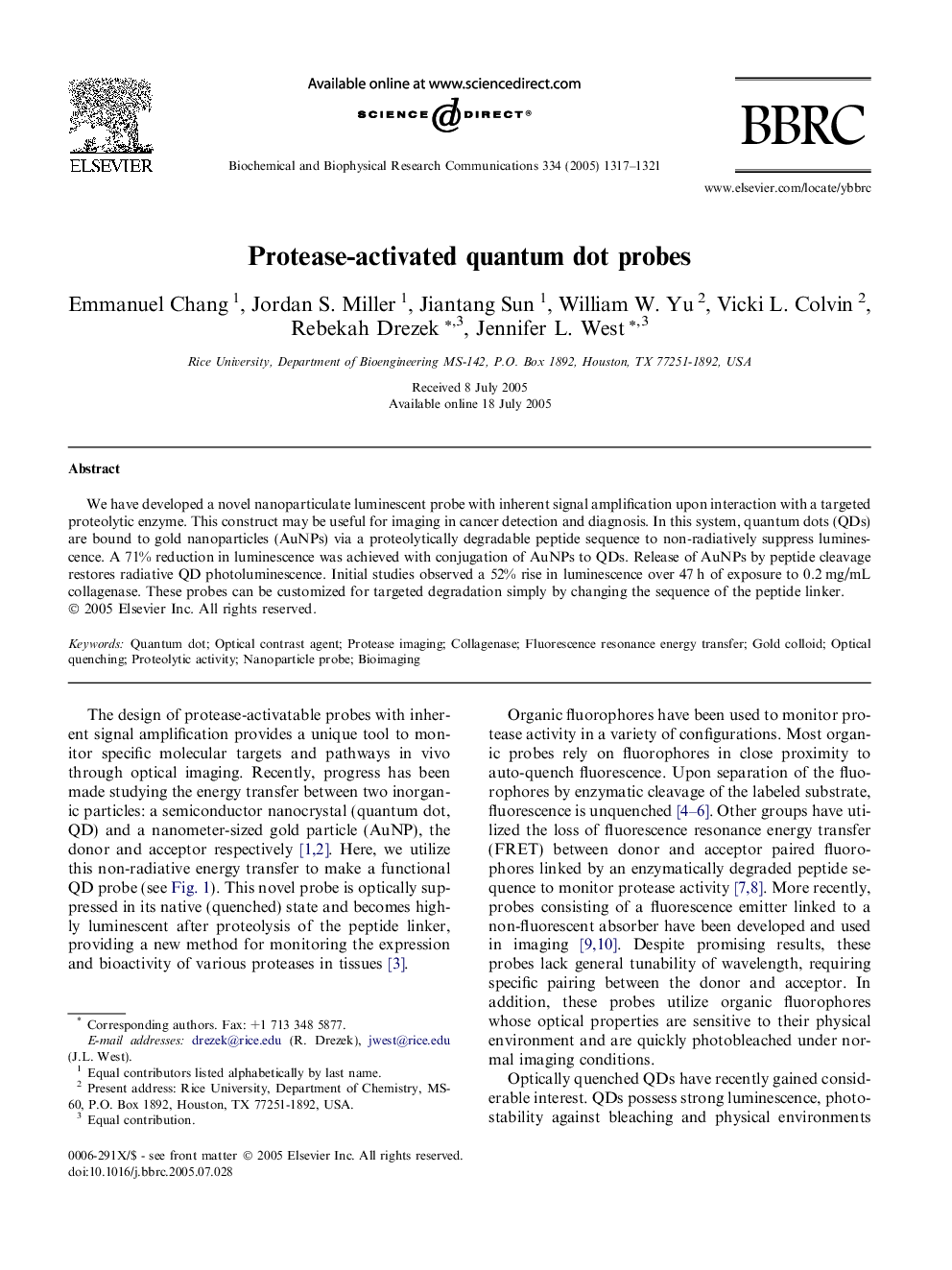| Article ID | Journal | Published Year | Pages | File Type |
|---|---|---|---|---|
| 10769066 | Biochemical and Biophysical Research Communications | 2005 | 5 Pages |
Abstract
We have developed a novel nanoparticulate luminescent probe with inherent signal amplification upon interaction with a targeted proteolytic enzyme. This construct may be useful for imaging in cancer detection and diagnosis. In this system, quantum dots (QDs) are bound to gold nanoparticles (AuNPs) via a proteolytically degradable peptide sequence to non-radiatively suppress luminescence. A 71% reduction in luminescence was achieved with conjugation of AuNPs to QDs. Release of AuNPs by peptide cleavage restores radiative QD photoluminescence. Initial studies observed a 52% rise in luminescence over 47Â h of exposure to 0.2Â mg/mL collagenase. These probes can be customized for targeted degradation simply by changing the sequence of the peptide linker.
Keywords
Related Topics
Life Sciences
Biochemistry, Genetics and Molecular Biology
Biochemistry
Authors
Emmanuel Chang, Jordan S. Miller, Jiantang Sun, William W. Yu, Vicki L. Colvin, Rebekah Drezek, Jennifer L. West,
